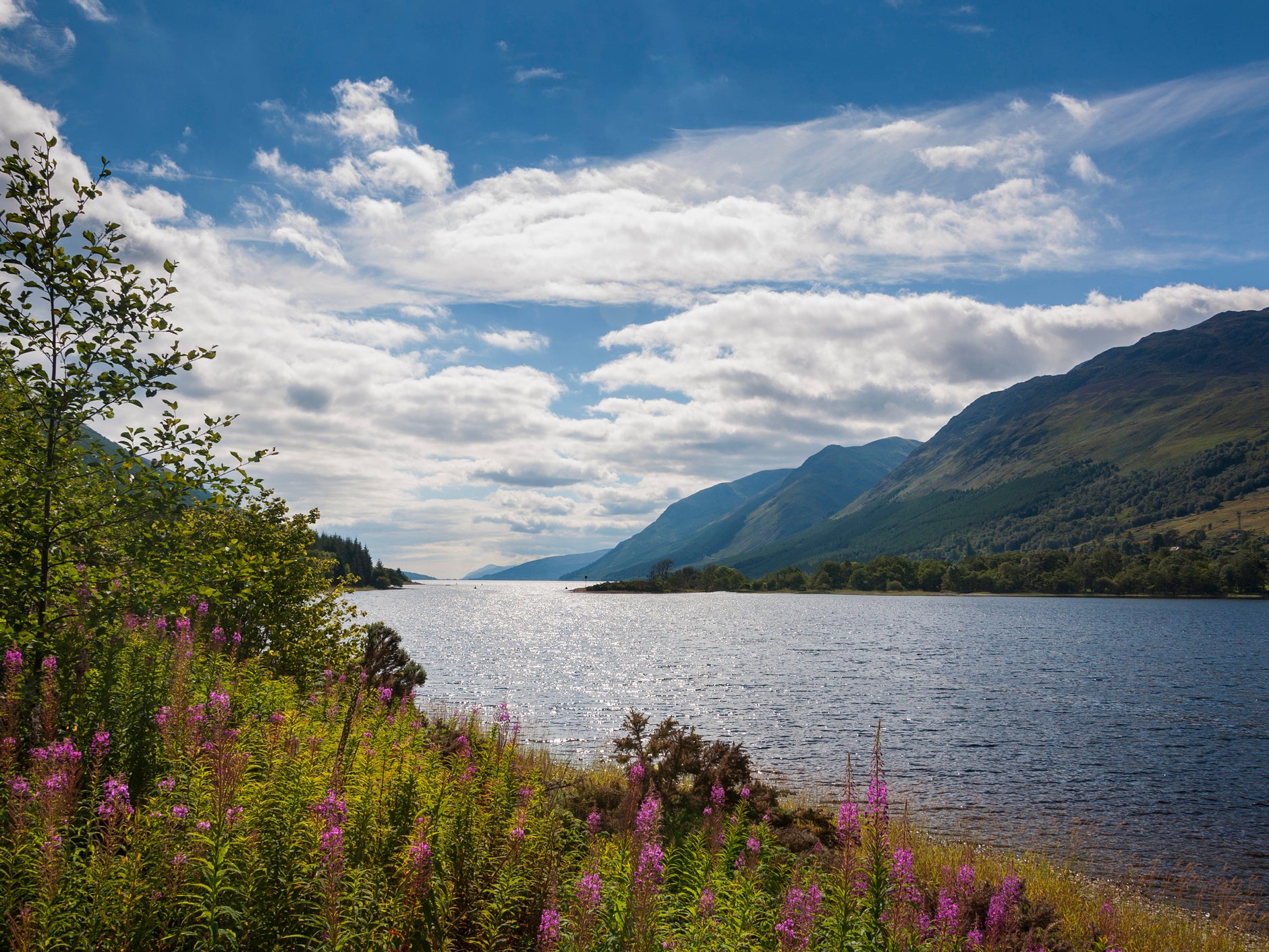Climate crisis: Green entrepreneur buys 500-hectare estate at Loch Ness for rewilding project
‘I am advised it is still way too early to push for lynx and wolves’, says owner of Bunloit estate, Jeremy Leggett

A Scottish estate of more than 500 hectares is set to be transformed into an “open natural laboratory” to advance rewilding and attempt to show how restoration of the natural world can become a profitable and environmentally friendly means of land management.
Bunloit Estate, on the banks of Loch Ness, has been bought by solar energy entrepreneur and former scientific director at Greenpeace, Jeremy Leggett, who in partnership with the organisation Rewilding Europe, will restore peatlands, return commercial plantations of non-native species of trees to mixed woodlands, and aim to significantly increase biodiversity.
The estate will employ local rangers while a “small number” of eco homes – made from some of the harvested wood – will be built by local construction company Makar, of which Mr Leggett is a board member.
Some animal species may also be brought to the estate, including Highland cattle and Shetland ponies, while the possibilities for reintroduction of other species could be explored in future.
The project is also pursuing links to Edinburgh University and the University of the Highlands and Islands in relation to biodiversity and climate studies.
“In our post-Covid-19 world we need to rebuild economies, tackle climate change and reverse biodiversity decline,” said Mr Leggett.
He sees the project as a means of demonstrating a different approach to land management which he hopes will be profitable, while actively benefiting the planet by removing considerably greater quantities of carbon from the environment than are created by the project in its entirety.
He told The Independent: “When the carbon fluxes are fully quantified and folk can see a holistic sink like Bunloit increasingly sucking greenhouse gas out of the atmosphere, [and] meanwhile creating more jobs and generating more income than the old, ruinous, land management ways, then I am hoping we can help lead the way to a capitalism re-engineered for survival and prosperity for the many, and not ecocide while enriching, temporarily, the few.”
Asked which animals he hopes to see benefit from the project and if any reintroductions were on the agenda, Mr Leggett said: “I would love to see nesting ospreys. I will be conferring on the prospects for bison to join the grazing team - likely to be Highland cattle and Shetland ponies from what I have been told so far.
“I think my streams, sorry ‘burns’, are too steep for beavers, but we will be checking with experts. As for lynx and wolves, I am advised it is still way too early to push for those, even though fences can keep them in and they are all over mainland Europe now.”
He is yet to come up against opponents to the plan, but said he expects to. “I know it will be impossible to please everybody all the time, but I am hoping that by conferring widely and taking a year to do it, I can please as many people as possible at least some of the time.”
If the project is successful it could directly lead to further rewilding in Scotland. Profits from revenue streams including forestry, nature-based tourism and income from carbon offsetting will be used to further rewild the land, lock up more carbon, and potentially acquire further estates in the area, according to Rewilding Europe.
“The Bunloit management approach has significant scalability potential,” said Rob Stoneman, Rewilding Europe’s area coordinator.
“It could lead to a change in the way land is used in the Scottish Highlands, with a far greater focus on the rewilding of landscapes as a means of locking up carbon.”
He added: “It could also contribute to a rethink about construction and the ability of wooden buildings to act as long-term carbon stores.”
Numerous rewilding projects across Britain are seeking to recalibrate land use amid a period of increased public scrutiny of modern industrial farming practices.
One of the best known rewilding projects in the UK has been the transformation of over 3,000 acres of farmland at the Knepp estate in West Sussex, where decades of barely profitable farming were ended by the landowners, who then allowed plants to naturally recolonise the land, generating a boom in biodiversity, and thereby attracted other means of income, through tourism, events and expertise.
Speaking about what the Bunloit project could represent, Mr Leggett said: “The social and economic goals excite me most. I think the form of capitalism that most economies pursue today is killing humankind, and the natural world too.
“Climate change and pandemics are just two examples of this. We need to engineer root to branch change in our economic system, and I dream of the Bunloit wildland project becoming a flagship for hope for some of the ways we can do that re-engineering.”
Subscribe to Independent Premium to bookmark this article
Want to bookmark your favourite articles and stories to read or reference later? Start your Independent Premium subscription today.

Join our commenting forum
Join thought-provoking conversations, follow other Independent readers and see their replies